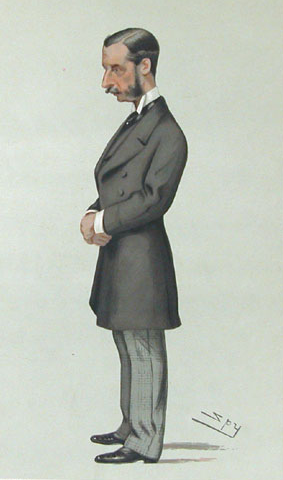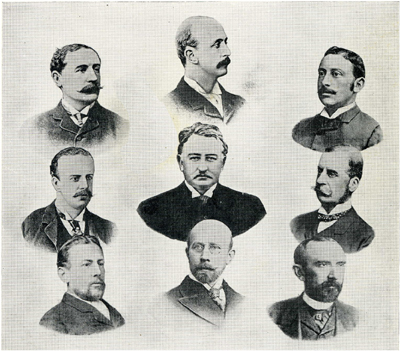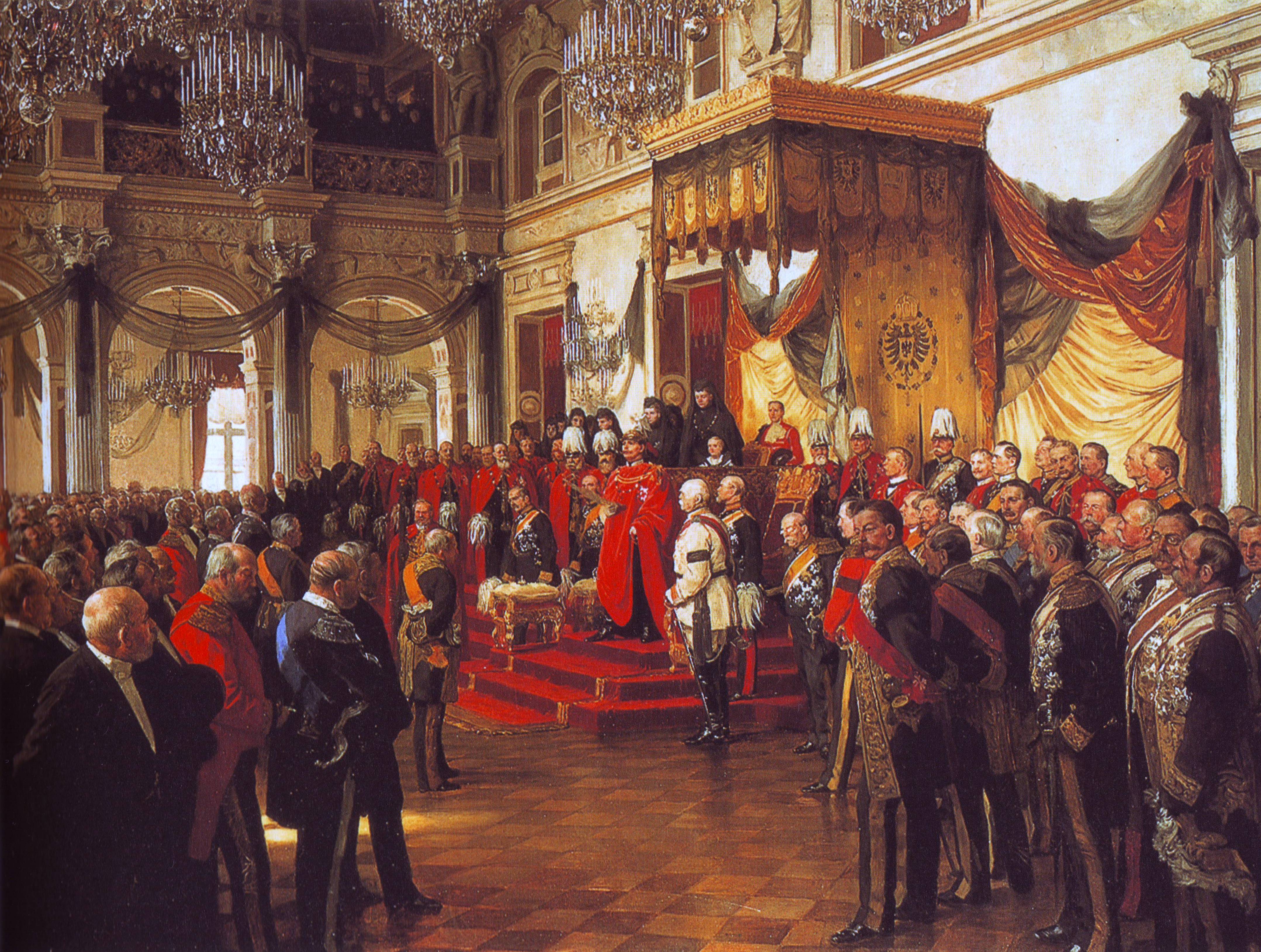|
James Hamilton, 2nd Duke Of Abercorn
James Hamilton, 2nd Duke of Abercorn (24 August 1838 – 3 January 1913), styled Viscount Hamilton until 1868 and Marquess of Hamilton from 1868 to 1885, was a British nobleman, groom of the stool, and diplomat. He was the son of James Hamilton, 1st Duke of Abercorn, and Lady Louisa Jane Russell. Biography Lord Hamilton was born on 24 August 1838, the eldest son of James Hamilton, second marquess and later first duke of Abercorn (1811–1885), and his wife Lady Louisa Jane Russell (1812–1905), second daughter of John Russell, sixth duke of Bedford. He was educated, like his father, at Harrow and Christ Church, Oxford, where he matriculated on 28 May 1857. After graduating from Oxford with a BA in 1860, he entered Parliament as Conservative MP for County Donegal, a constituency he represented from 1860 to 1880. After serving as High Sheriff of Tyrone for 1863, he re-entered university and emerged with an M.A. in 1865 (he was created a Companion of the Order of the Bath ... [...More Info...] [...Related Items...] OR: [Wikipedia] [Google] [Baidu] |
James Hamilton, 1st Duke Of Abercorn
James Hamilton, 1st Duke of Abercorn, (21 January 1811 – 31 October 1885), styled Viscount Hamilton from 1814 to 1818 and The Marquess of Abercorn from 1818 to 1868, was a British Conservative statesman who twice served as Lord Lieutenant of Ireland. Background and education Born into an Ulster-Scots aristocratic family at Seymour Place, Mayfair, on 21 January 1811, Abercorn was the son of James, Viscount Hamilton, himself the eldest son of The 1st Marquess of Abercorn. His mother, Harriet, was the second daughter of The Hon. John Douglas, himself the son of The 14th Earl of Morton. His father died when Abercorn was only three. In 1818, aged seven, he succeeded his grandfather in his titles and estates. He was educated at Harrow School and Christ Church, Oxford, where he matriculated on 2 July 1829. Political career Lord Abercorn was first appointed a deputy lieutenant of County Tyrone, where he had a family seat at Baronscourt. On 13 November 1844, Lord Abercorn wa ... [...More Info...] [...Related Items...] OR: [Wikipedia] [Google] [Baidu] |
High Sheriff Of Tyrone
The High Sheriff of Tyrone is the Sovereign's judicial representative in County Tyrone. Initially an office for lifetime, assigned by the Sovereign, the High Sheriff became annually appointed from the Provisions of Oxford in 1258. Besides his judicial importance, he has ceremonial and administrative functions and executes High Court Writs. History The first (High) Shrievalties were established before the Norman Conquest in 1066 and date back to Saxon times. In 1908, an Order in Council made the Lord-Lieutenant the Sovereign's prime representative in a county and reduced the High Sheriff's precedence. Despite however that the office retains his responsibilities for the preservation of law and order in a county. While the office of High Sheriff ceased to exist in those Irish counties, which had formed the Irish Free State in 1922, it is still present in the counties of Northern Ireland Northern Ireland ( ga, Tuaisceart Éireann ; sco, label= Ulster-Scots, Norlin Airlann) i ... [...More Info...] [...Related Items...] OR: [Wikipedia] [Google] [Baidu] |
Sweden And Norway
Sweden and Norway or Sweden–Norway ( sv, Svensk-norska unionen; no, Den svensk-norske union(en)), officially the United Kingdoms of Sweden and Norway, and known as the United Kingdoms, was a personal union of the separate kingdoms of Sweden and Norway under a common monarch and common foreign policy that lasted from 1814 until its peaceful dissolution in 1905. The two states kept separate constitutions, laws, legislatures, administrations, state churches, armed forces, and currencies; the kings mostly resided in Stockholm, where foreign diplomatic representations were located. The Norwegian government was presided over by viceroys: Swedes until 1829, Norwegians until 1856. That office was later vacant and then abolished in 1873. Foreign policy was conducted through the Swedish foreign ministry until the dissolution of the union in 1905. Norway had been in a closer union with Denmark, but Denmark-Norway's alliance with Napoleonic France caused the United Kingdom and Russia ... [...More Info...] [...Related Items...] OR: [Wikipedia] [Google] [Baidu] |
Edward VII
Edward VII (Albert Edward; 9 November 1841 – 6 May 1910) was King of the United Kingdom of Great Britain and Ireland and Emperor of India, from 22 January 1901 until his death in 1910. The second child and eldest son of Queen Victoria and Prince Albert of Saxe-Coburg and Gotha, and nicknamed "Bertie", Edward was related to royalty throughout Europe. He was Prince of Wales and heir apparent to the British throne for almost 60 years. During the long reign of his mother, he was largely excluded from political influence and came to personify the fashionable, leisured elite. He travelled throughout Britain performing ceremonial public duties and represented Britain on visits abroad. His tours of North America in 1860 and of the Indian subcontinent in 1875 proved popular successes, but despite public approval, his reputation as a playboy prince soured his relationship with his mother. As king, Edward played a role in the modernisation of the British Home Fleet and the reorganis ... [...More Info...] [...Related Items...] OR: [Wikipedia] [Google] [Baidu] |
British South Africa Company
The British South Africa Company (BSAC or BSACo) was chartered in 1889 following the amalgamation of Cecil Rhodes' Central Search Association and the London-based Exploring Company Ltd, which had originally competed to capitalize on the expected mineral wealth of Mashonaland but united because of common economic interests and to secure British government backing. The company received a Royal Charter modelled on that of the British East India Company. Its first directors included The 2nd Duke of Abercorn, Rhodes himself, and the South African financier Alfred Beit. Rhodes hoped BSAC would promote colonisation and economic exploitation across much of south-central Africa, as part of the "Scramble for Africa". However, his main focus was south of the Zambezi, in Mashonaland and the coastal areas to its east, from which he believed the Portuguese could be removed by payment or force, and in the Transvaal, which he hoped would return to British control. It has been suggested that R ... [...More Info...] [...Related Items...] OR: [Wikipedia] [Google] [Baidu] |
Privy Council Of Ireland
His or Her Majesty's Privy Council in Ireland, commonly called the Privy Council of Ireland, Irish Privy Council, or in earlier centuries the Irish Council, was the institution within the Dublin Castle administration which exercised formal executive power in conjunction with the chief governor of Ireland, who was viceroy of the British monarch. The council evolved in the Lordship of Ireland on the model of the Privy Council of England; as the English council advised the king in person, so the Irish council advised the viceroy, who in medieval times was a powerful Lord Deputy. In the early modern period the council gained more influence at the expense of the viceroy, but in the 18th century lost influence to the Parliament of Ireland. In the post-1800 United Kingdom of Great Britain and Ireland, the Irish Privy Council and viceroy Lord Lieutenant had formal and ceremonial power, while policy formulation rested with a Chief Secretary directly answerable to the British cabinet. T ... [...More Info...] [...Related Items...] OR: [Wikipedia] [Google] [Baidu] |
Grand Lodge Of Ireland
The Grand Lodge of Ireland is the second most senior Grand Lodge of Freemasons in the world, and the oldest in continuous existence. Since no specific record of its foundation exists, 1725 is the year celebrated in Grand Lodge anniversaries, as the oldest reference to Grand Lodge of Ireland comes from the ''Dublin Weekly Journal'' of 26 June 1725. This describes a meeting of the Grand Lodge to install the new Grand Master, The 1st Earl of Rosse, on 24 June. The Grand Lodge has regular Masonic jurisdiction over 13 Provincial Grand Lodges covering all the Freemasons of the island of Ireland, and another 11 provinces worldwide. History There is considerable evidence of Masonic Lodges meeting in Ireland prior to the 18th century. The story of the "Lady Freemason", Elizabeth St. Leger, dates to a time prior to the existence of the Grand Lodge; also, there are references to Lodge meetings across Dublin in a speech given in Trinity College, Dublin, as far back as 1688. The oldest art ... [...More Info...] [...Related Items...] OR: [Wikipedia] [Google] [Baidu] |
Grand Master (Masonic)
A Grand Master is a title of honour as well as an office in Freemasonry, given to a freemason elected to oversee a Masonic jurisdiction, derived from the office of Grand Masters in chivalric orders. He presides over a Grand Lodge and has certain rights in the constituent Lodges that form his jurisdiction. In most, but not all cases, the Grand Master is styled "Most Worshipful Grand Master." One example of a differing title exists in the Grand Lodge of Pennsylvania, where the Grand Master is titled "Right Worshipful". Under the Grand Lodge of Scotland, the role is titled "Grand Master Mason". Deputies Just as the Worshipful Master of a Lodge annually appoints lodge officers to assist him, so the Grand Master of each Grand Lodge annually appoints Grand Lodge officers to assist him in his work. Grand Lodges often elect or appoint Deputy Grand Masters (sometimes also known as District Deputy Grand Masters) who can act on behalf of the Grand Master when he is unable to do so. In ... [...More Info...] [...Related Items...] OR: [Wikipedia] [Google] [Baidu] |
Speech From The Throne
A speech from the throne, or throne speech, is an event in certain monarchies in which the reigning sovereign, or a representative thereof, reads a prepared speech to members of the nation's legislature when a session is opened, outlining the government's agenda and focus for the forthcoming session, or in some cases closed. When a session is opened, the address sets forth the government's priorities with respect to its legislative agenda, for which the cooperation of the legislature is sought. The speech is often accompanied with formal ceremony and is often held annually, although in some places it may occur more or less frequently, whenever a new session of the legislature is opened. Historically, when monarchs exercised personal influence and overall decision-making in government, a speech from the throne would outline the policies and objectives of the monarch; the speech was usually prepared by the monarch's advisers, but the monarch supervised the drafting of the speec ... [...More Info...] [...Related Items...] OR: [Wikipedia] [Google] [Baidu] |
Lord Lieutenant Of County Donegal
This is a list of people who served as Lord Lieutenant of County Donegal. There were lieutenants of counties in Ireland until the reign of James II, when they were renamed governors. The office of Lord Lieutenant was recreated on 23 August 1831. The office is pronounced as 'Lord ''Lef''-tenant'. Lieutenant * Rory O'Donnell, 1st Earl of Tyrconnell: 28 March 1605– Governors * Henry Conyngham, 1st Earl Conyngham: 1746–1781 * Ralph Gore, 1st Earl of Ross: 1781– * William Conyngham: 1781–1796 * Robert Clements, 1st Earl of Leitrim: 1781–1804 Johnston-Liik, ''History of the Irish Parliament'', vol. III, p. 432. * Sir Samuel Hayes, 1st Baronet: 1781–1807 Beatson's ''Political Index'' (1806) vol. IIIp. 371 * John Hamilton, 1st Marquess of Abercorn (died 1818) * Nathaniel Clements, 2nd Earl of Leitrim: –1831''The Royal Kalendar'' for 1831p. 389 * Henry Conyngham, 1st Marquess Conyngham Henry Burton Conyngham, 1st Marquess Conyngham, (26 December 1766 – 28 Decem ... [...More Info...] [...Related Items...] OR: [Wikipedia] [Google] [Baidu] |
Edward VII Of The United Kingdom
Edward VII (Albert Edward; 9 November 1841 – 6 May 1910) was King of the United Kingdom of Great Britain and Ireland and Emperor of India, from 22 January 1901 until his death in 1910. The second child and eldest son of Queen Victoria and Prince Albert of Saxe-Coburg and Gotha, and nicknamed "Bertie", Edward was related to royalty throughout Europe. He was Prince of Wales and heir apparent to the British throne for almost 60 years. During the long reign of his mother, he was largely excluded from political influence and came to personify the fashionable, leisured elite. He travelled throughout Britain performing ceremonial public duties and represented Britain on visits abroad. His tours of North America in 1860 and of the Indian subcontinent in 1875 proved popular successes, but despite public approval, his reputation as a playboy prince soured his relationship with his mother. As king, Edward played a role in the modernisation of the British Home Fleet and the reorganis ... [...More Info...] [...Related Items...] OR: [Wikipedia] [Google] [Baidu] |
Lord Of The Bedchamber
Gentleman of the Bedchamber was a title in the royal household of the Kingdom of England from the 11th century, later used also in the Kingdom of Great Britain. A Lord of the Bedchamber was a courtier in the Royal Household; the term being first used in 1718. The duties of the Lords and Gentleman of the Bedchamber originally consisted of assisting the monarch with dressing, waiting on him when he ate, guarding access to his bedchamber and closet and providing companionship. Such functions became less important over time, but provided proximity to the monarch; the holders were thus trusted confidants and often extremely powerful. The offices were in the gift of The Crown and were originally sworn by Royal Warrant directed to the Lord Chamberlain. This is an ''incomplete'' list of noblemen who have served as Lord of the Bedchamber or Gentleman of the Bedchamber: Description and functions There were always several holders of the office, who were invariably gentlemen and almost ... [...More Info...] [...Related Items...] OR: [Wikipedia] [Google] [Baidu] |


.jpg)



